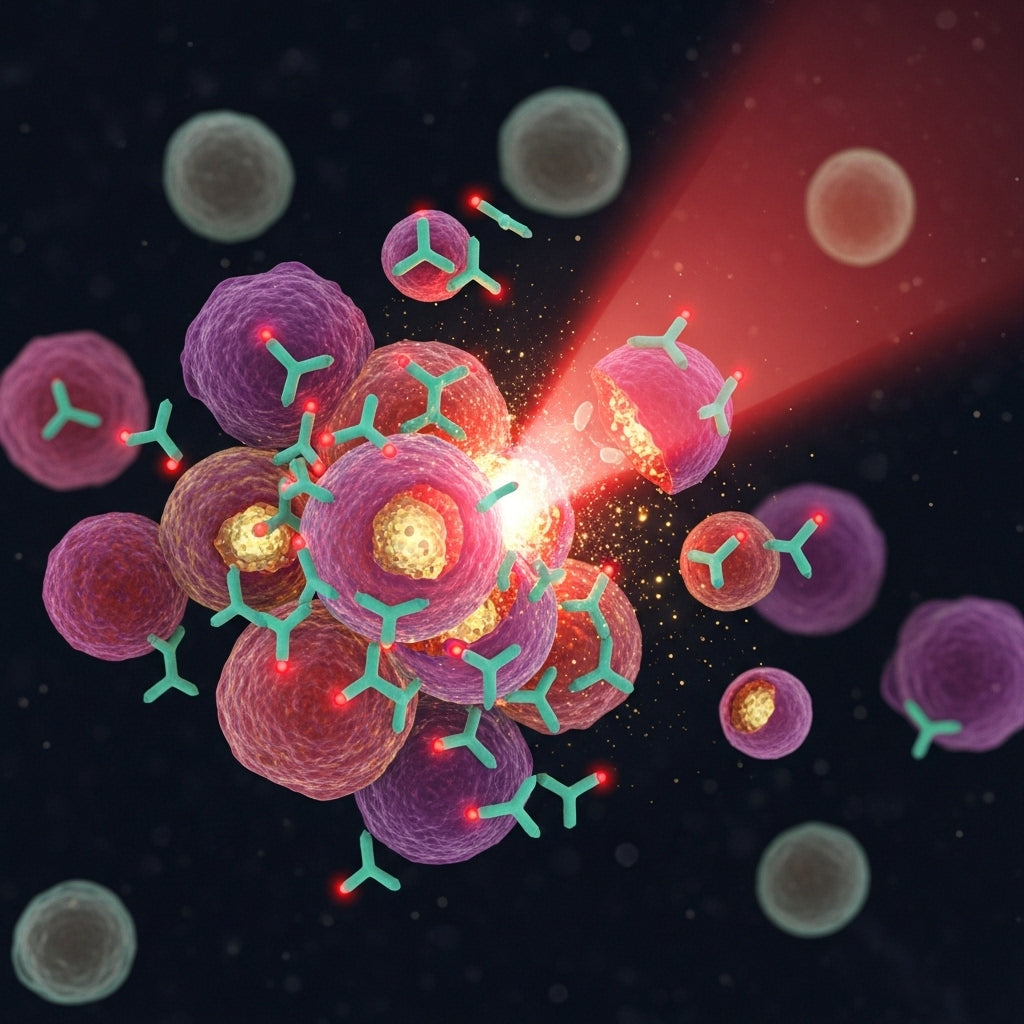
Breakthrough: How 734nm Infrared Light Therapy Can Stop Cancer Cell Growth
Published: July 17, 2025
Recent advances in near-infrared light therapy, especially at the 734nm wavelength, are offering new hope in the fight against cancer. Rigorous studies show that specific light wavelengths can stop cancer cell growth, induce cellular senescence, and even selectively destroy tumors while sparing healthy cells. Below, you'll find a summary of the top scientific breakthroughs, each with direct links to authoritative sources for more information.
Selective Senescence: 734nm Infrared Light Puts Cancer Cells to Sleep
A groundbreaking peer-reviewed study found that 734 nm near-infrared light can induce senescence—a permanent non-dividing state—in breast and lung cancer cells. This treatment did not harm healthy, non-cancerous cells, making it a targeted and potentially side-effect-free approach.
Read the full research article here.
Molecular Jackhammers: Vibration Technology Obliterates Tumors with Light
Imagine molecules that drill apart cancer cells using light! Researchers at Texas A&M and collaborators have created aminocyanine "jackhammer" molecules that respond to near-infrared light by vibrating and destroying cancer cells—from lab dishes to animal models, they've achieved up to 99% tumor cell kill rates.
Listen to the science podcast covering this breakthrough.
Photoimmunotherapy: Targeted Antibodies and Infrared Light Burst Tumors
Using advanced antibodies bound to photoabsorbers, photoimmunotherapy exposes tumors to near-infrared light, causing cancer cells to swell and rupture, while leaving healthy tissue untouched. This is in clinical trials for stubborn head, neck, and deep-tissue cancers.
Review photoimmunotherapy research for more details.
Red & NIR LED Therapy: Low-Level Light Stops Melanoma Growth
In preclinical studies, red and near-infrared LED exposure triggers apoptosis (programmed cell death) and immune responses that shrink melanoma tumors, with minimal side effects.
This therapy is now being evaluated alongside standard treatments, offering a non-invasive possibility for melanoma management.
Photobiomodulation (PBMT) and Cancer: Comprehensive Review
Comprehensive reviews highlight the careful balance required when using NIR and visible light in cancer therapy: when dosed correctly, PBMT can halt cancer cell cycles, induce senescence, or encourage immune attacks on tumors—all while preserving healthy cells.
What Does This Mean For the Future of Cancer Care?
734nm infrared light and related therapies are opening a new frontier for safe, non-invasive, and highly targeted cancer treatments. While much research is in early stages, clinical trials are underway, and the science is advancing quickly.
- Potential to replace or complement existing cancer therapies
- Minimal side effects due to selectivity for cancer cells
- Emerging use cases in photoimmunotherapy and photobiomodulation
